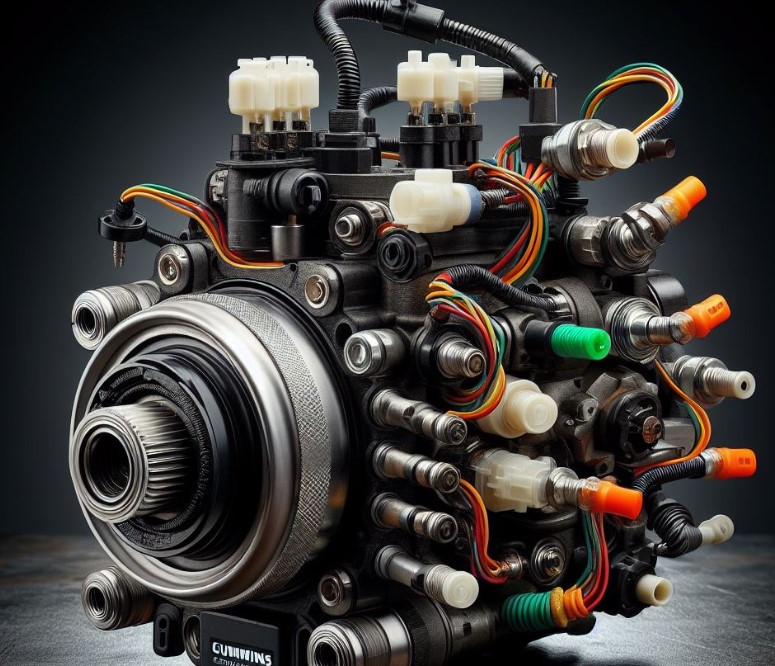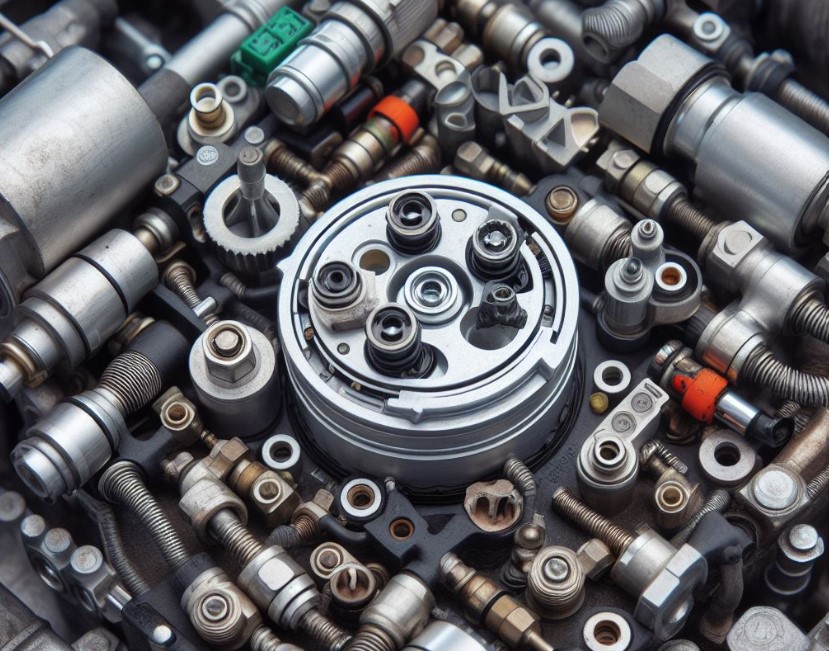Cummins Bad Fuel Control Actuator Symptoms [How To Diagnose?]
This article will explain Cummins Bad Fuel Control Actuator Symptoms and how to fix them? The Cummins engine, renowned for its durability and performance, occasionally faces issues with its fuel control actuator (FCA). This component is crucial for regulating fuel pressure in the engine. When it malfunctions, the engine experiences a range of symptoms. Detecting these symptoms early is key to maintaining the engine’s longevity and efficiency.
Key Takeaways
- Identifying symptoms of a bad fuel control actuator in Cummins engines.
- Understanding the impact on engine performance.
- Tips for diagnosis and maintenance.
Cummins Bad Fuel Control Actuator Symptoms
A bad fuel control actuator in Cummins engines can manifest through various symptoms. These include irregular idling, power loss, and increased fuel consumption. Early detection of these symptoms can prevent more severe engine issues.

Irregular Idling
When the FCA is faulty, the engine may idle erratically. This is due to inconsistent fuel pressure, causing the engine to rev up or down unexpectedly.
Power Loss
Another common symptom is a noticeable loss of power. This occurs because the engine isn’t receiving the right amount of fuel pressure, crucial for optimal performance.
Increased Fuel Consumption
A failing FCA often leads to increased fuel consumption. This is because the engine compensates for the irregular fuel flow by using more fuel than necessary.
Engine Stalling
Engine stalling can occur if the FCA fails, disrupting the fuel supply to the engine and causing it to shut down unexpectedly.
Diagnosis and Maintenance
Diagnosing a bad fuel control actuator involves checking fuel pressure and inspecting the FCA for physical damage. Regular maintenance, including periodic checks and timely replacement of the FCA, is crucial.
Fuel Pressure Check
A key diagnostic step is to measure the fuel pressure. Abnormal readings often indicate FCA issues.
Physical Inspection
Inspect the FCA for signs of wear or damage. Physical damage can impede its function, leading to the symptoms mentioned.
Impact on Engine Performance
The impact on engine performance due to a bad fuel control actuator is significant. It can lead to reduced efficiency and increased wear and tear on the engine.

Reduced Efficiency
With a malfunctioning FCA, the engine’s efficiency drops. This means lower power output and higher fuel costs.
Increased Engine Wear
An improperly functioning FCA can cause uneven fuel distribution, leading to increased engine wear and potential long-term damage.
Preventive Measures
Taking preventive measures can greatly reduce the likelihood of FCA issues. These include regular maintenance and using quality fuel.
Regular Maintenance
Routine checks and maintenance of the FCA are essential. This helps in early detection and rectification of potential issues.
Quality Fuel Usage
Using high-quality fuel ensures the FCA and other engine components function optimally, reducing the risk of malfunction.
How To Fix All Cummins Bad Fuel Control Actuator Symptoms?
Fixing the symptoms of a bad Fuel Control Actuator (FCA) in Cummins engines involves a few key steps. It’s important to approach this systematically, as improper handling can lead to further complications.

Step 1: Diagnose the Issue
- Initial Assessment: Begin by observing the symptoms – irregular idling, power loss, increased fuel consumption, and engine stalling.
- Fuel Pressure Test: Use a fuel pressure gauge to check if the fuel pressure is within the recommended range.
- Visual Inspection: Look for physical damage or wear on the FCA and related components.
Step 2: Replace the Fuel Control Actuator
- Purchase the Correct Part: Ensure you have the correct FCA replacement part for your specific Cummins engine model.
- Remove the Old FCA: Disconnect the battery, relieve the fuel system pressure, and then carefully remove the old FCA.
- Install the New FCA: Fit the new FCA in place, ensuring it is properly seated and connected.
Step 3: Test After Replacement
- Check for Leaks: After installation, check for fuel leaks around the new FCA.
- Test Run the Engine: Start the engine to ensure it idles smoothly and the symptoms have been resolved.
Step 4: Regular Maintenance
- Routine Checks: Regularly inspect the FCA and fuel system as part of your engine maintenance schedule.
- Use Quality Fuel: Always use high-quality fuel to prevent contaminants from damaging the FCA and other fuel system components.
Step 5: Professional Help
- Consult a Professional: If you’re unsure about any step, consult a professional mechanic. Cummins engines are sophisticated, and some procedures may require specialized knowledge and tools.
What Does Cummins Fuel Pump Actuator Do?
The Fuel Pump Actuator in a Cummins engine plays a pivotal role in managing the flow and pressure of fuel to the engine’s injectors. This component is integral to the fuel injection system, especially in diesel engines where precise fuel delivery is crucial for efficient combustion.
The actuator works by receiving electronic signals from the engine control unit (ECU), which dictate the amount of fuel needed based on various engine operating conditions.
It ensures that the right amount of fuel is delivered at the right time, maintaining optimal engine performance and efficiency. In essence, the Fuel Pump Actuator is a critical component for engine responsiveness and overall health.
What Is The Function Of The Fuel Control Actuator?
The Fuel Control Actuator (FCA), specifically in Cummins engines, functions as a regulator for fuel pressure within the high-pressure fuel pump.

Its main task is to maintain the correct pressure of fuel being sent to the engine’s injectors. The FCA adjusts the pressure based on the engine’s demands, which can vary greatly depending on speed, load, and other operational conditions.
Essentially, the FCA ensures that the engine receives the optimal amount of fuel for any given situation, playing a key role in fuel efficiency, engine performance, and emission control. It is a vital component for the proper functioning and longevity of the engine.
Where Is The Fuel Control Actuator On A Cummins?
In Cummins engines, the Fuel Control Actuator is typically located on or near the high-pressure fuel pump. The exact location can vary depending on the specific model and design of the engine.
In many Cummins diesel engines, the FCA is found mounted on the fuel pump itself, making it a crucial part of the fuel delivery system. Its placement is strategic to ensure it can accurately regulate the fuel pressure going into the injectors.
For exact location details, referring to the engine’s service manual or consulting with a Cummins-certified technician is advisable, as they can provide model-specific information.
Conclusion
In conclusion, recognizing Cummins bad fuel control actuator symptoms is crucial for maintaining engine performance and longevity. Regular diagnostics, maintenance, and the use of quality fuel are key to preventing and addressing FCA issues. Being proactive in these measures ensures the Cummins engine continues to operate at its best.
Frequently Ask Questions
Can Regular Maintenance Prevent FCA Problems?
Regular maintenance can significantly reduce the likelihood of FCA problems. This includes using quality fuel, timely servicing of the engine, and immediate attention to any irregular engine behavior.
Is it Expensive to Replace a Fuel Control Actuator?
The cost of replacing an FCA can vary. It depends on the model of the Cummins engine and labor costs. While the part itself might not be excessively expensive, labor costs can add up.
What Happens if I Ignore FCA Problems in My Cummins Engine?
Ignoring FCA problems can lead to more severe engine issues, including reduced efficiency, higher fuel consumption, and even complete engine failure in extreme cases.
How Often Should the FCA be Checked for Potential Issues?
It’s advisable to check the FCA during regular vehicle maintenance intervals. Consulting your Cummins engine maintenance schedule can provide specific guidance.

Welcome to the exhilarating world of Matt Rex, a professional car racer turned renowned vehicle enthusiast. Immerse yourself in his captivating blog as he shares heart-pounding adventures, expert reviews, and valuable insights on cars, trucks, jets, and more. Fuel your passion for speed and discover the beauty of vehicles through Matt’s engaging stories and meticulous expertise. Join the ever-growing community of enthusiasts who find inspiration and expert advice in Matt Rex’s blog—a digital hub where the thrill of speed meets the pursuit of knowledge.



![Polaris Virage Not Getting Fuel [All Causes]](https://www.turbochaos.com/wp-content/uploads/2023/07/Polaris-Virage-Not-Getting-Fuel-768x512.jpg)
![What Does A Turbo Silencer Ring Do? [Explained]](https://www.turbochaos.com/wp-content/uploads/2023/12/What-Does-A-Turbo-Silencer-Ring-Do-768x694.jpg)


